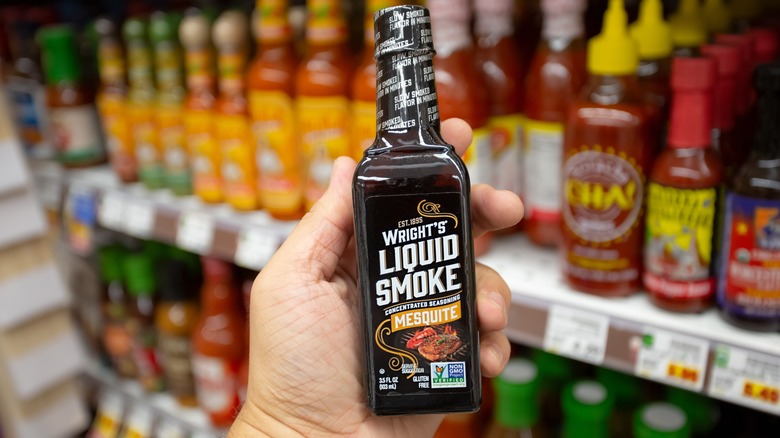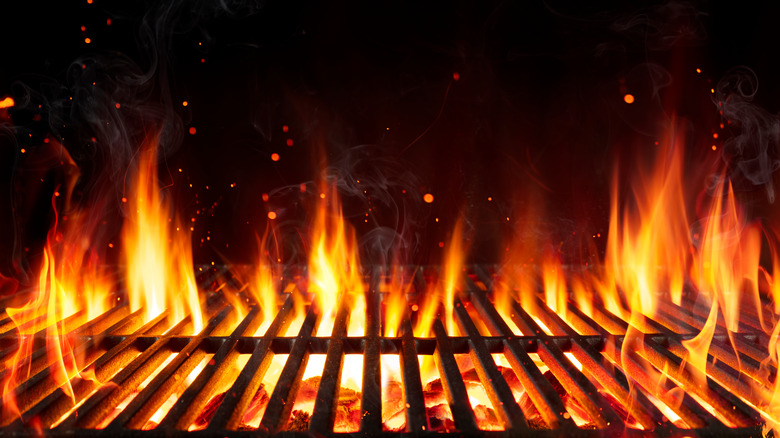The Unexpected Inspiration For Liquid Smoke
If you are a barbecue fanatic, you likely have some variety of liquid smoke sitting in your pantry. While the substance is widely considered to be an easy out by barbecue traditionalists, per Smoked BBQ Source, its purpose is to simply provide a smoky flavor to food without going having it go through a smoking process. For those of you who aren't familiar, liquid smoke is just as its name suggests: an extremely concentrated liquid form of smoke that is obtained by capturing the condensed vapor of burning wood, according to The Spruce Eats.
This caramel-colored liquid, with a nostalgic smell reminiscent of campfires, is often used as an additional layer of rich, complex flavor in barbeque sauces, meat recipes, vegetarian meats, and even in cocktails and candies, according to Taste of Home. Usually, a few drops are all you need to get the full effect of liquid smoke due to its potency.
The history of liquid smoke
According to Eater, the origins of the liquid smoke date back to 1895 when a pharmacist from Missouri, Ernest H. Wright, had a recollection. As a teenager, Wright worked in a print shop where he remembered seeing liquid dripping down the stove pipe and understood that when the smoke combined with the cold air, it condensed into a liquid form. Wright then manually applied this technique to create the modern alternative we know as liquid smoke.
Historically, smoking meat was not only used as a flavoring agent but also as a way to preserve it (per The Meat We Eat), which is what liquid smoke was primarily used for and marketed as in its earlier days. However, during the suburban boom of the mid-20th century and the growing popularity of the backyard cookout, the product's marketing was shifted to match the consumer demand for smokier flavors, Eater notes. That marketing is likely what you will see on the bottles today.

